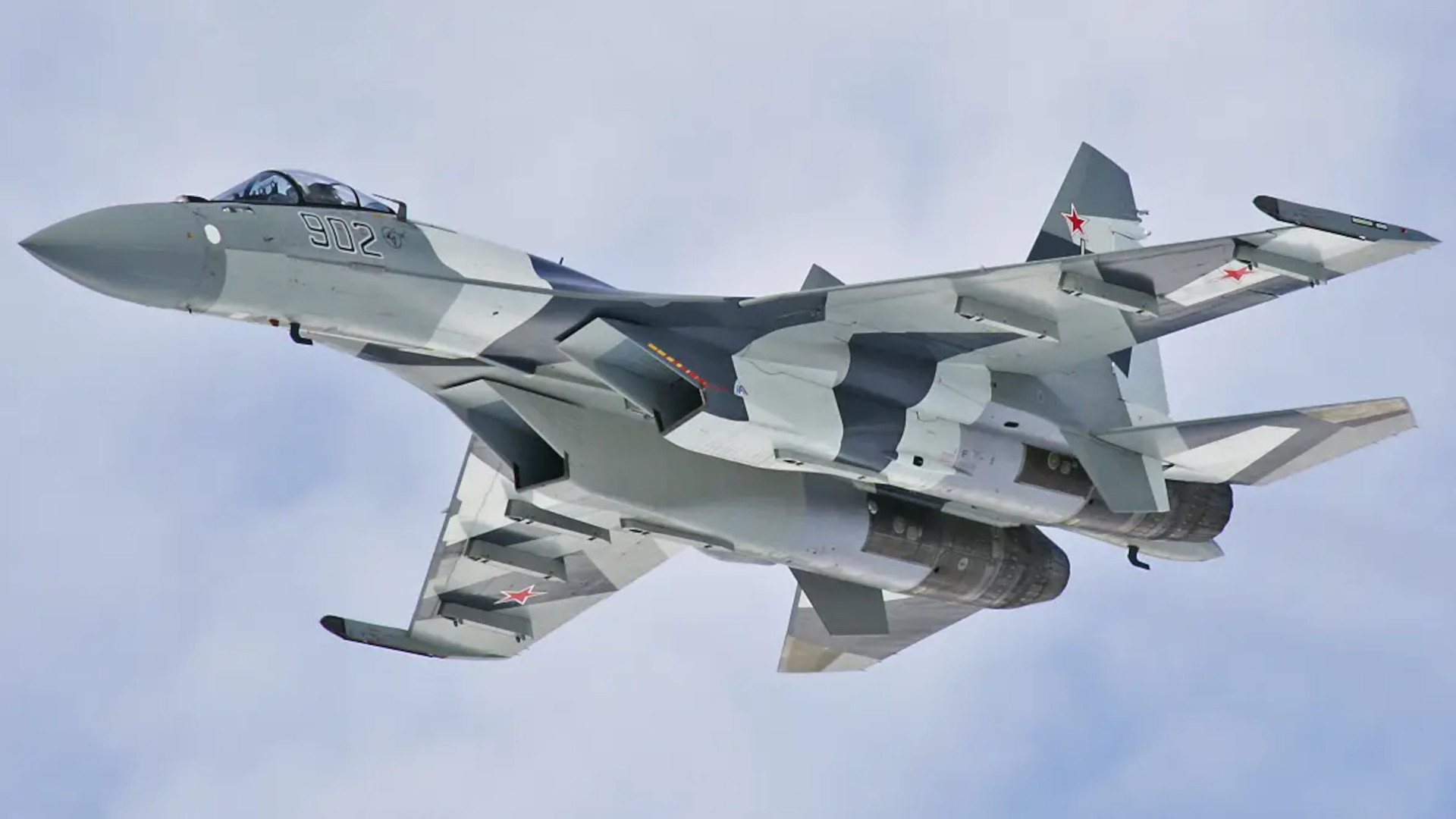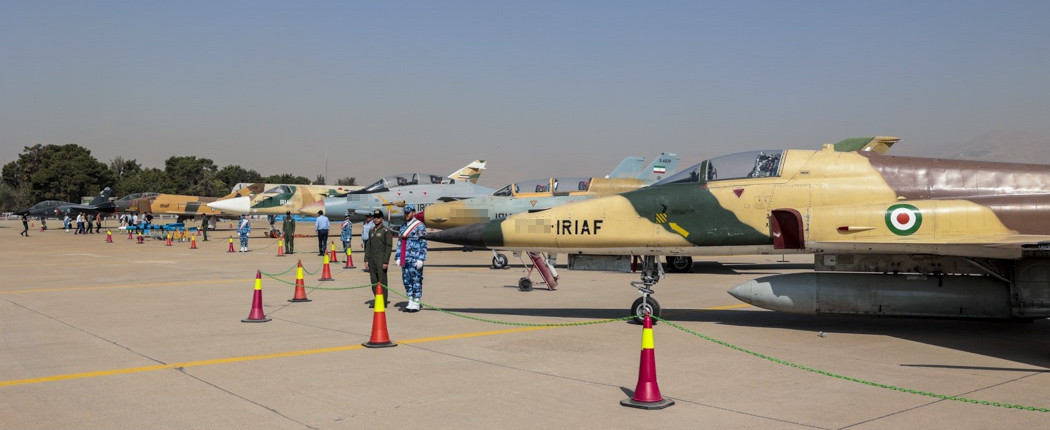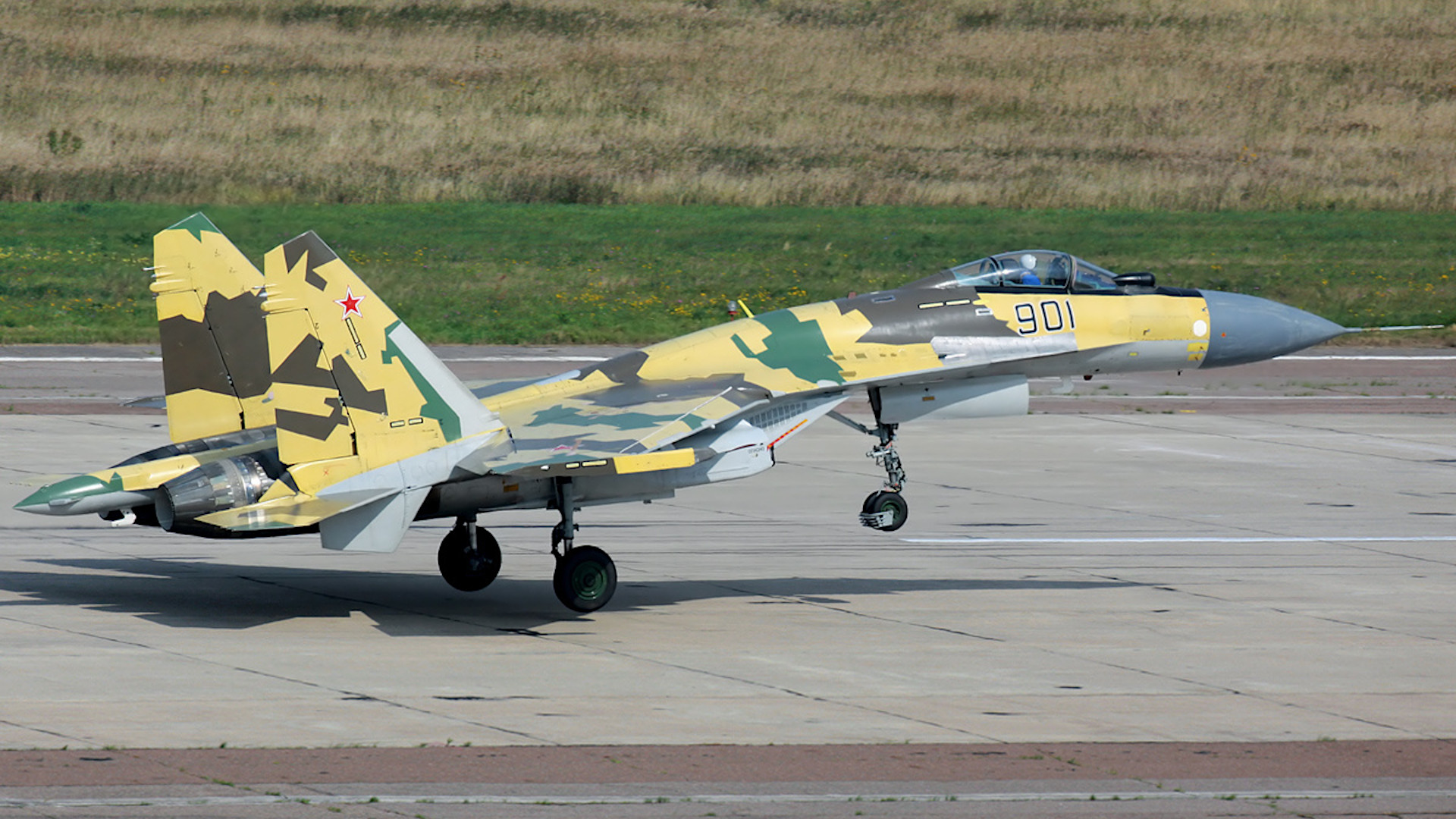Iran looks to be set to receive Russian-made Su-35 Flanker-E fighters in the new year, according to U.S. officials. The assessment is based on a program to teach a tranche of Iranian pilots to fly the Su-35 that took place in Russia in the spring. That training is part of what American authorities have said is an “unprecedented” degree of military and other technological assistance flowing from Moscow to Tehran that is tied, at least in part, to Iran’s support for Russia’s war in Ukraine, including deliveries of kamikaze drones.
Senior officials in President Joe Biden’s administration told reporters today that Russia has been supplying Iran with a variety of weapon systems and other military equipment, including unspecified helicopters and air defense systems, as well as other assistance, like the Su-35 training. In addition to more Kamikaze drones, the Russian government is still reportedly seeking to acquire hundreds of Iranian short-range ballistic missiles as part of this exchange.

This surge in cooperation has been driven by the conflict in Ukraine, with Moscow seeing Tehran as a valuable source of materiel to support its war effort in the face of crippling international sanctions. Iranian ballistic missiles could give Russian forces a particularly potent tool for further strikes that Ukrainian forces would be hard-pressed, at least at present, to defend against, as The War Zone has explored in depth previously.
However, the relationship is now transforming into a broader “full-fledged defense partnership,” according to the U.S. government.
“This partnership poses a threat not just to Ukraine, but to Iran’s neighbors in the region,” one official said, according to NBC News. “We have shared this information with partners in the Middle East and around the world.”
This concern is clearly based in part on Iran’s potential acquisition of Su-35 fighter jets, which would represent a massive infusion of new aerial combat capability into the increasingly geriatric Iranian Air Force. Iran has not sourced any truly new fighter jets since the 1990s when it purchased a small number of Russian MiG-29 Fulcrum fighters. As such, its air arm continues to rely heavily on Cold War-era U.S.-made F-4 Phantom IIs, F-14 Tomcats, and F-5E/F Tiger IIs and locally reworked versions thereof, all of which were inherited following the 1979 revolution and are increasingly difficult to sustain. Relatively small numbers of dated Soviet, French, and Chinese types are also in Iran’s inventory.

In September, the commander of Iran’s Air Force, Brig. Gen. Hamid Vahedi, publicly stated that his country was in active discussions with the Russian government about acquiring new fighter jets. Though he did not name the type of aircraft at the center of this possible deal, he described them as being “4++ generation” types, a term often used to describe the Su-35, among other advanced 4th generation fighters in production elsewhere.
As The War Zone, among others, noted back in September, the Russian government has a possible way to accelerate such a transfer. A batch of Su-35SE aircraft originally built for Egypt has been languishing in Russia as a result of sanction threats from the United States. Russia’s war on Ukraine has only made it even more unlikely that Washington would grant Cairo a waiver to complete the deal. In March, now-retired U.S. Marine Corps Gen. Frank McKenzie, then head of U.S. Central Command (CENTCOM), indicated that the U.S. government had or at least was poised to offer up a sale of F-15 Eagles to Egypt, pointing to further American pressure to cancel the planned purchase of the Flanker-Es entirely.
The Kremlin also has a long history of using low or no-interest loans to finance politically useful arms deals, and speed them up as a result. In this specific case, however, it might be framed publicly that Moscow and Tehran could easily arrive at a deal that is an exchange in kind, too. A trade involving Su-35s for drones, missiles, and other materiel could be of particular interest to the cash-strapped Kremlin. At the same time, officials in Tehran may also be interested in bolstering their own cash reserves given the immense sanctions their country is under combined with high inflation and the major wave of protests going on there at present.
All this being said, even if Iran receives all 24 Su-35SEs originally bound for Egypt next year, it’s not clear exactly how much that might change the regional balance of power, especially with regard to Tehran’s chief opponents in the Middle East, Israel and Saudi Arabia. The Israeli and Saudi air forces operate some of the most advanced fighter jets in the world, like Israel’s F-35I Adir stealth fighters and Saudi Arabia’s F-15SA Advanced Eagles, and in significant quantities.
Still, Su-35s for Iran could well reflect a much broader effort to modernize the country’s armed forces with Russian assistance. For instance, though U.S. officials have not provided any details about the air defense systems the Russians have sent or are looking to send to their Iranian counterparts as part of this expanded partnership, it is no secret that Tehran has been looking to acquire S-400 long-range surface-to-air missile systems for years now.
As with its air force, Iran’s air defense network is composed in significant part of aging systems it inherited from the government of the Shah. It also has a relatively small number of newer systems acquired from Russia, including S-300 surface-to-air missile batteries, since the end of the Cold War. The country has produced a number of local designs based on older American and Russian designs, as well. Any major modernization of its air defenses could present new challenges for its opponents.

In the other direction, deepening cooperation between Moscow and Tehran could have significant ramifications for Russia, and the war in Ukraine, by extension. Though there very much remains a debate about their exact impact on the fighting so far, Iranian-made kamikaze drones do present real dangers to Ukrainian military forces and civilian infrastructure. Despite reports that Russia’s current stock of these uncrewed aircraft might be dwindling, Ukrainian authorities believe more are on the way and the country’s armed forces are still clearly taking the threat they pose very seriously.
If Russia can acquire significant numbers of Iranian short-range ballistic missiles as part of this current partnership, this could have even more pronounced effects on the trajectory of the conflict. Though the United States and Ukraine’s other international partners have been working hard to funnel additional air defense assets into the country, this has not yet included any sort of anti-ballistic missile capability.
It does, of course, remain to be seen when, or even if, Russia does deliver Su-35s to Iran. Any number of hurdles could still exist to such an acquisition, as well as other potential arms deals between the two countries. When it comes to kamikaze drones, there have been reports that Iran may be looking to help Russia establish some level of domestic capacity to produce or at least assemble them, possibly to avoid potential complications associated with direct deliveries. Just in the past month or so, the U.S. Treasury Department has announced new sanctions on Russian and Iranian entities over transfers of drones specifically.
At the same time, Tehran sending pilots to Russia to learn how to fly Flanker-Es is strong evidence that the Iranian Air Force may see the most significant new addition to its fleets in decades in the coming year.
Contact the author: joe@thedrive.com
